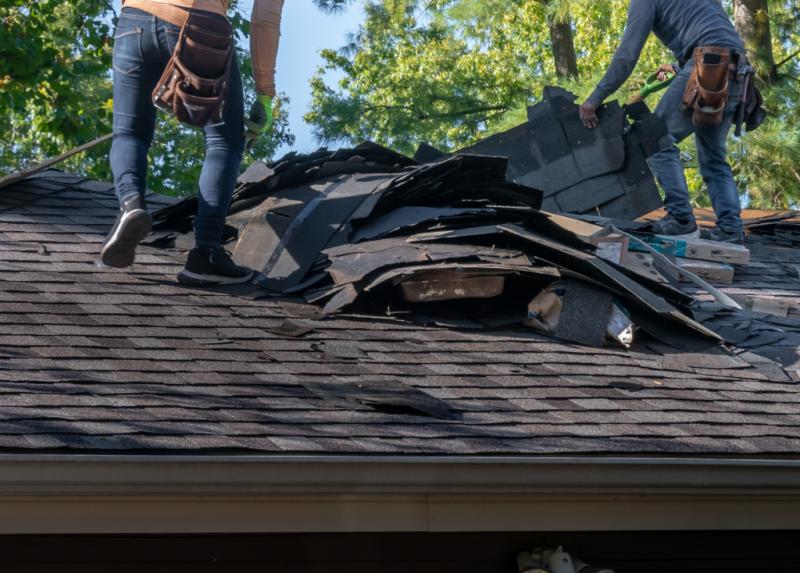What To Do If Your Home Sustains Storm Damage?

Do the words ‘storm damage’ run a shiver down your spine? It’s likely the case if you live in an area prone to storms and you’re aware of the side effects of their occurrence. You’ve probably taken precautionary measures to counter them.
However, depending on the storm's extent, damage can still occur, and you must be prepared. Suppose you’ve never experienced storm damage. What will you do after one?
This article sheds light on the steps you should take in the event of storm damage. Read on for this insight!
It’s best to do the following:
1. Get To Safety
Storm damage can be extensive, and it’s important to prioritize your safety first. Suppose a section of your roof has caved in, but it’s still raining. Please don’t leave your house. Instead, find a clean room and stay there until the rain stops.
As you seek safety, ensure you switch off your main electrical switch to cut off electricity. You don’t want to get electrocuted, especially if your house is flooded.
What if the storm is over? At this point, you can evacuate your home without moving anything; doing this will come in handy later. You should go outside for a few minutes to an hour to allow any hanging parts to fall on their own. This way, they won’t injure you.
2. Call Your Insurance Provider
An insurance provider is supposed to cushion you against such events by helping you cater to the damage. Therefore, proceed to contact your home insurance provider as soon as possible. It’d help to check your policy and confirm it caters to storm damage.
When calling the provider, inform them of the damage and that you’re filing an insurance claim.
Next, assess the extent of the damage to your home. Take pictures and, if possible, make a video explaining your home's before and after situation. Be sure to do this both inside and outside. With storm damage claims, it’s best to be thorough with the evidence to ensure you get the right compensation. Consider hiring an expert to assist you in identifying the damage to your home.
During this process, the insurance company will request many things from you, such as documents, and will hire an adjuster to verify these damages. Therefore, you must be patient and cooperative throughout the process. Please provide them with what they require without crossing any given deadline.
Lastly, keep the records of your communication and any documentation you provide to the insurance provider. They'll serve as evidence if necessary.

3. Seek Professional Assistance
After giving evidence to the insurance provider and having their adjuster confirm the same, it’s time to restore your home to its original state.
There’s a probability your floor is still flooded; you may want to remove the water out. This is where you hire a water restoration service provider. They’ll remove the water in your home, with others proceeding to help you clean up, including removing mold.
With the water out of the way, it’s time to repair any damage. For your caved-in roof, consider hiring a roofing contractor. They’ll know how best to replace and repair it. If your walls and floors have been water damaged, seek the services of a general contractor. They’ll check for structural damage and advise on the next course of action.
As you seek the services of the contractors, ensure they’re professionals. They should show you their accreditations.
4. Prevent Future Damage
As you repair your home, take precautions to reduce or eliminate the possibility of storm damage in the future. How?
The roof, walls, and openings are the most commonly damaged areas. For the walls, check for any cracks and seal any you might find. These cracks might be the source of flooding in your home. Lastly, ensure your window and door frames are well secured, and there are no air leaks. Such leaks will let rainwater into your home.
For the roof, ask the contractor to secure the edges to the truss such that the roofing material can’t lift away even under extra force. Ensure the roof has no damage, whether one or two holes. If there are any, seal them appropriately. If you leave them unattended, rainwater can find its way into your home and expand the holes, causing extensive damage.
Lastly, it’s time to work on your compound. Ensure it slopes away from your home. This way, should it rain, the water will drain away and not towards it, such that water finds its way into your home by gravity.
Conclusion
The preceding discussion provided a step-by-step guide to assist you in recovering after storm damage in your home. It has also given guidelines to prevent future storm damage. Therefore, it’s in your best interest to adopt it for an easier time.
More to Read:
Previous Posts:










